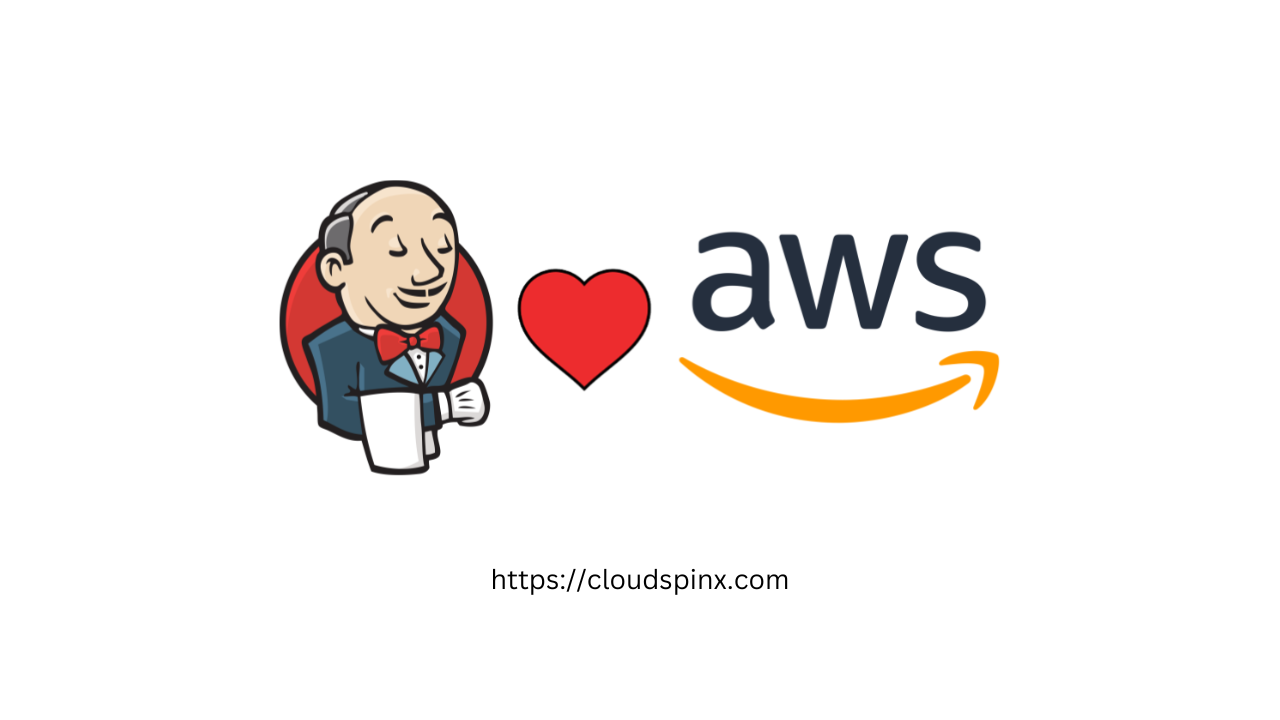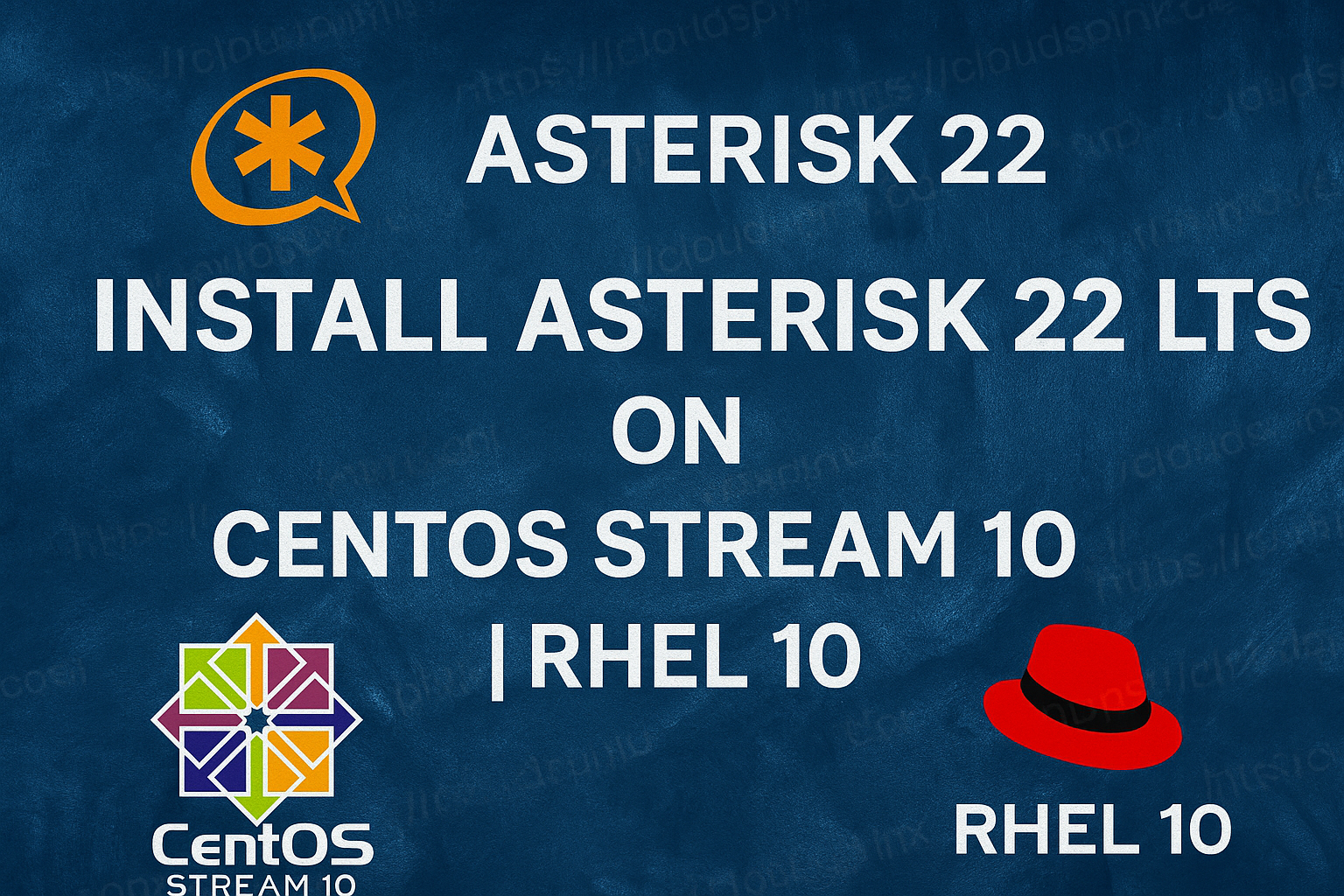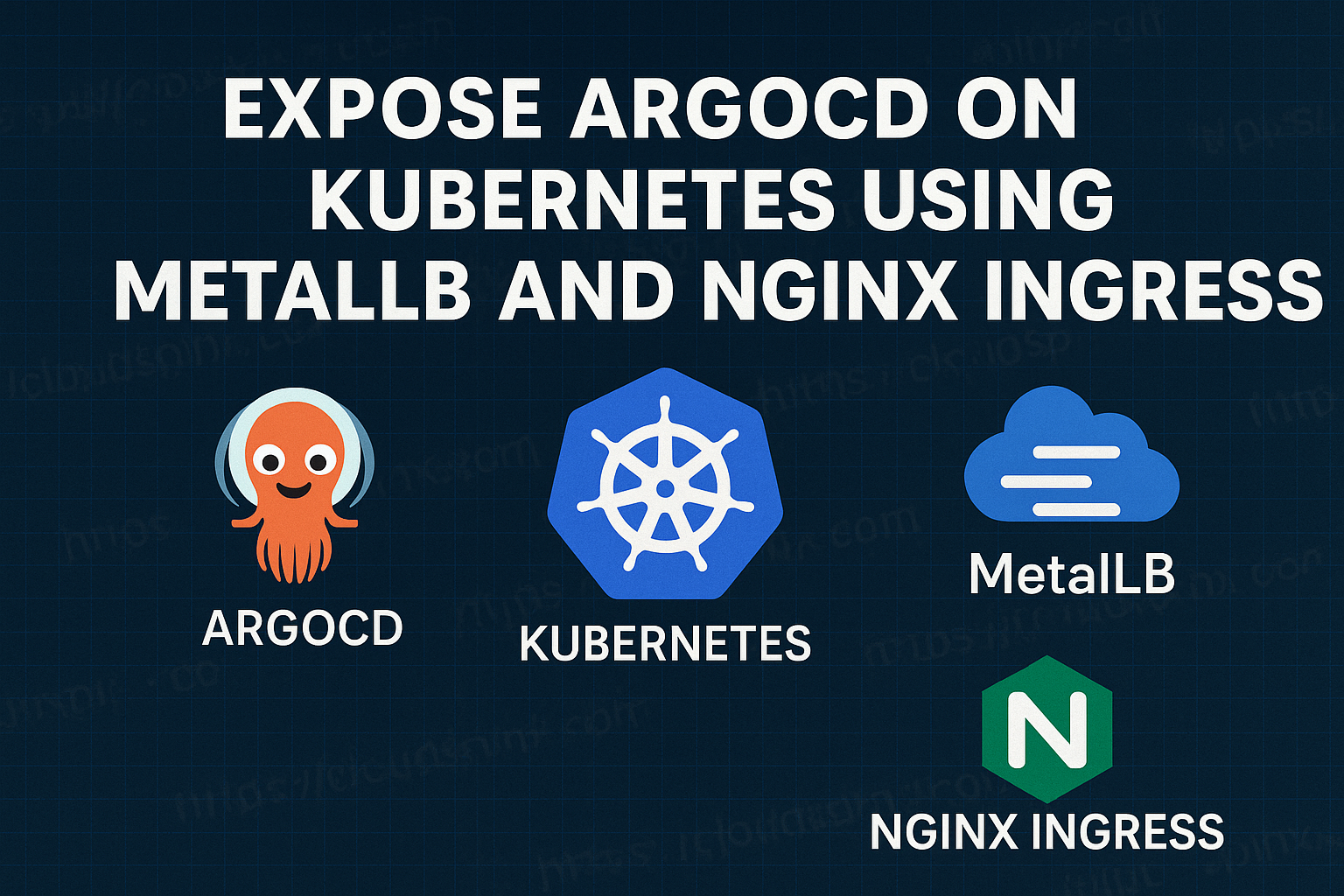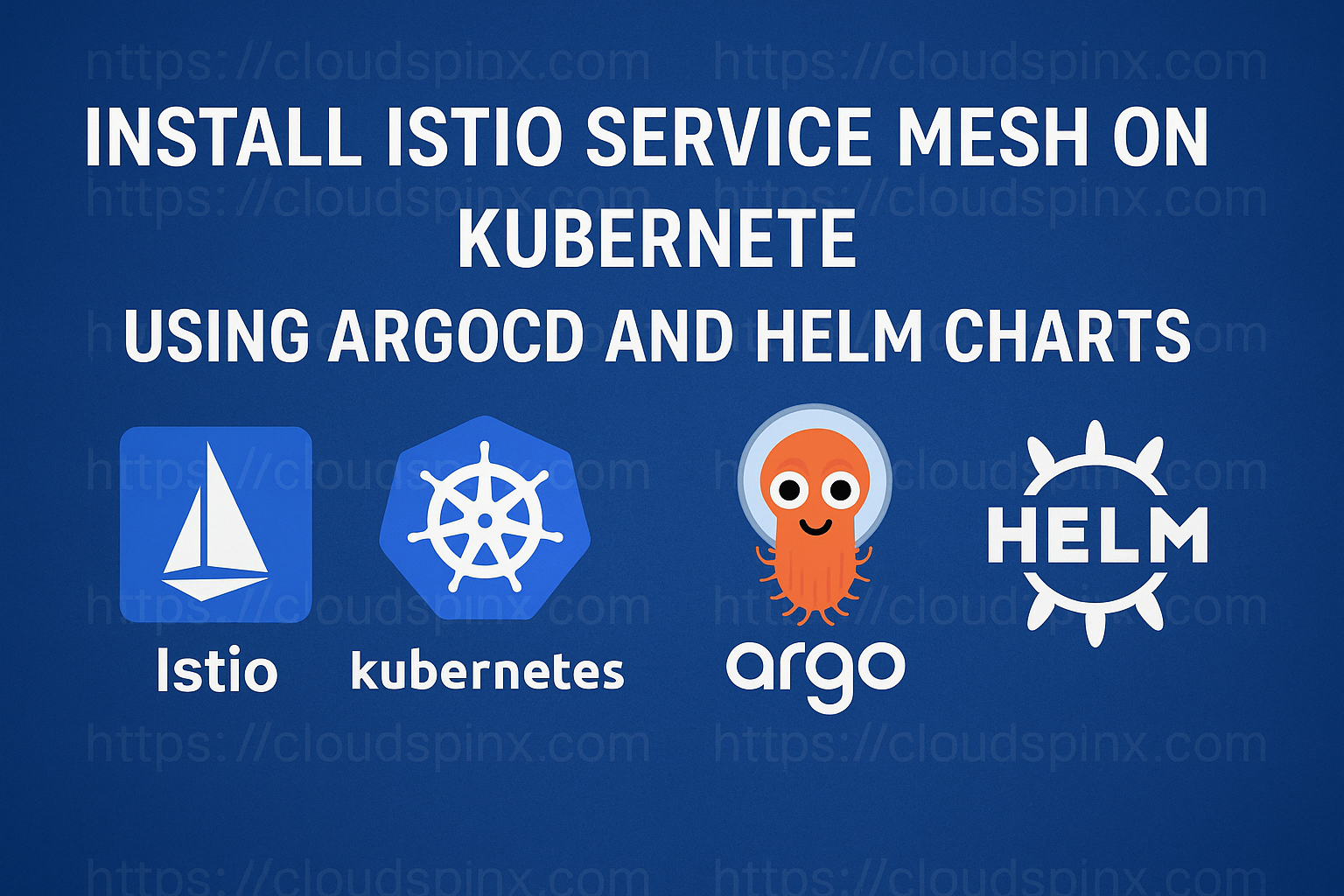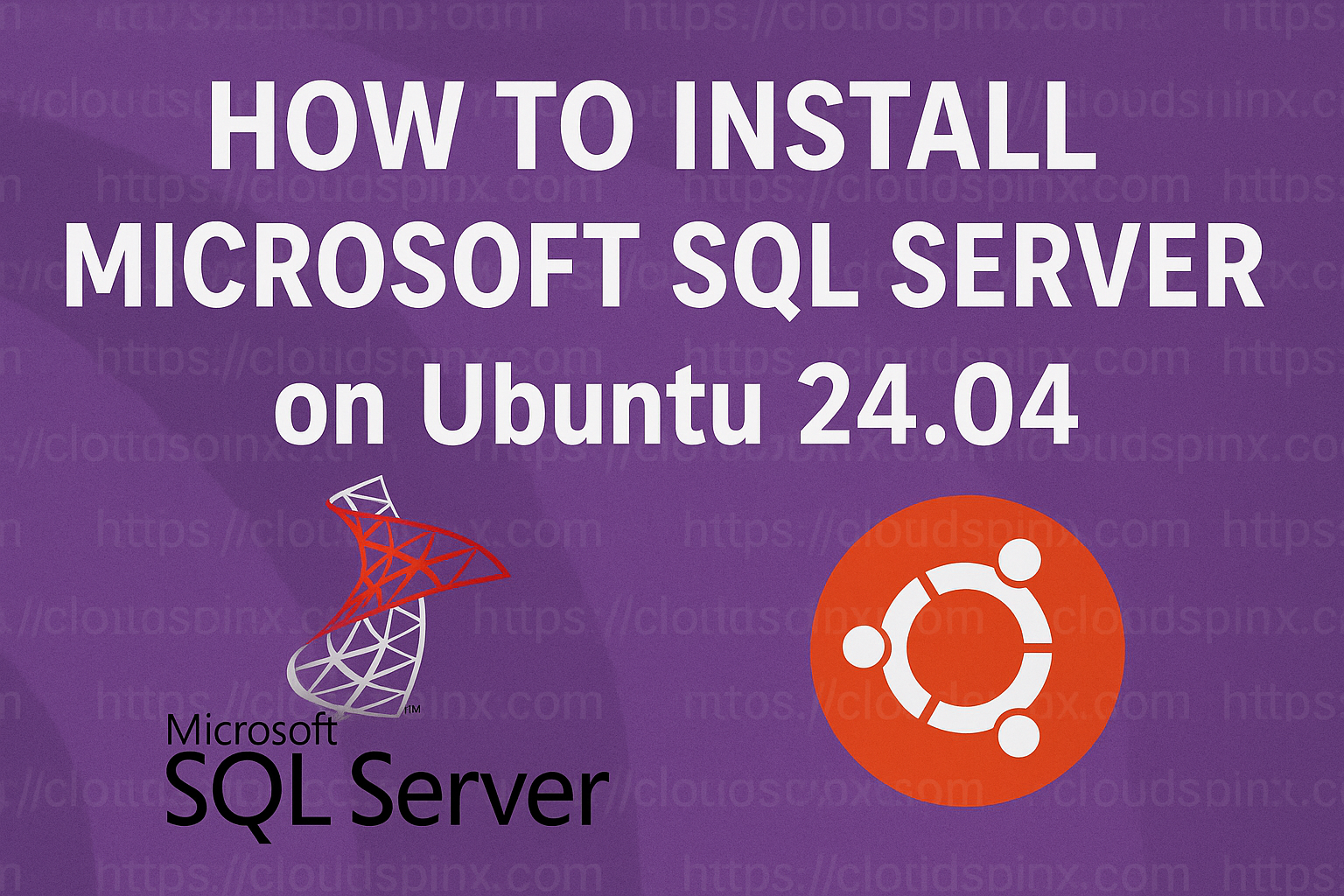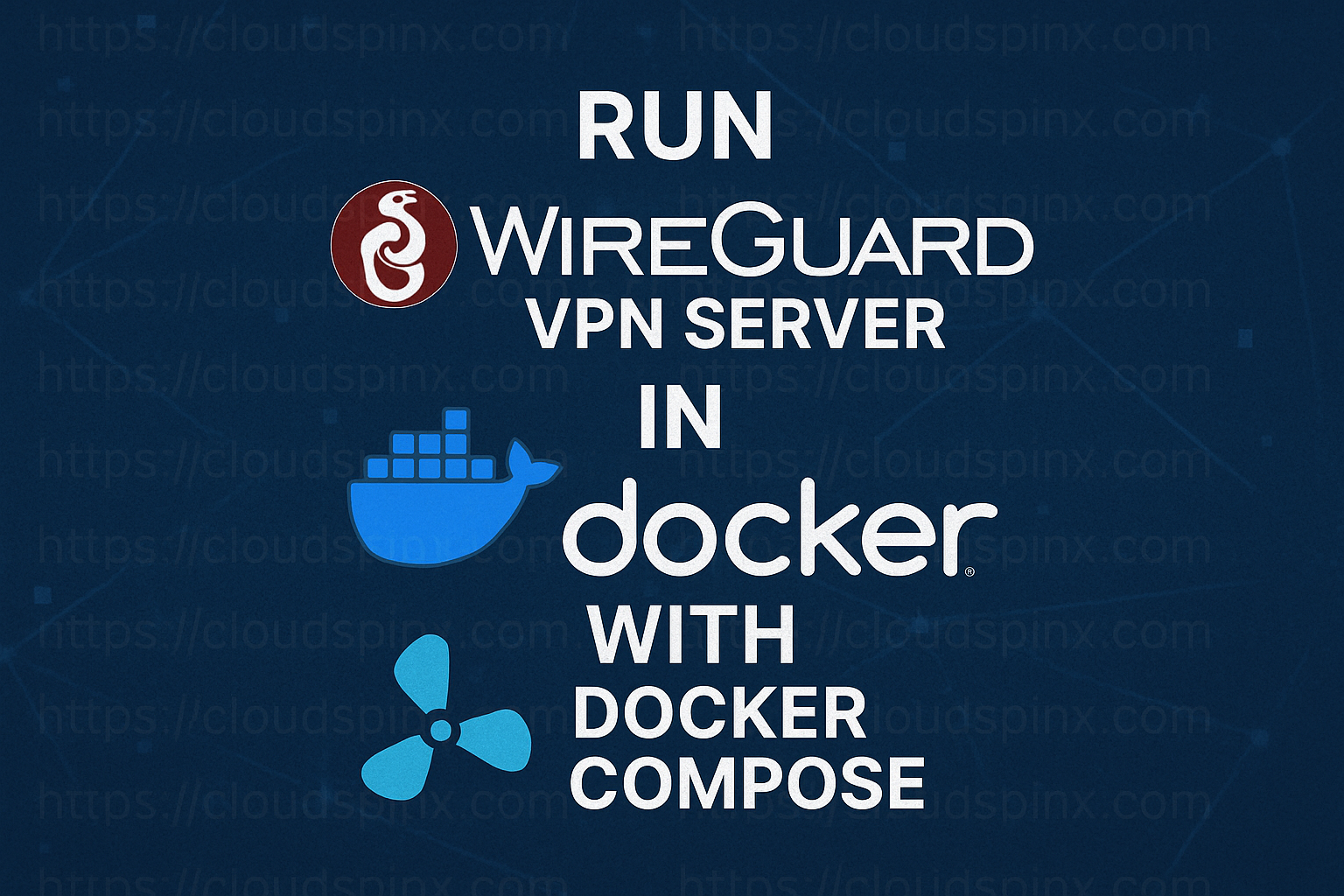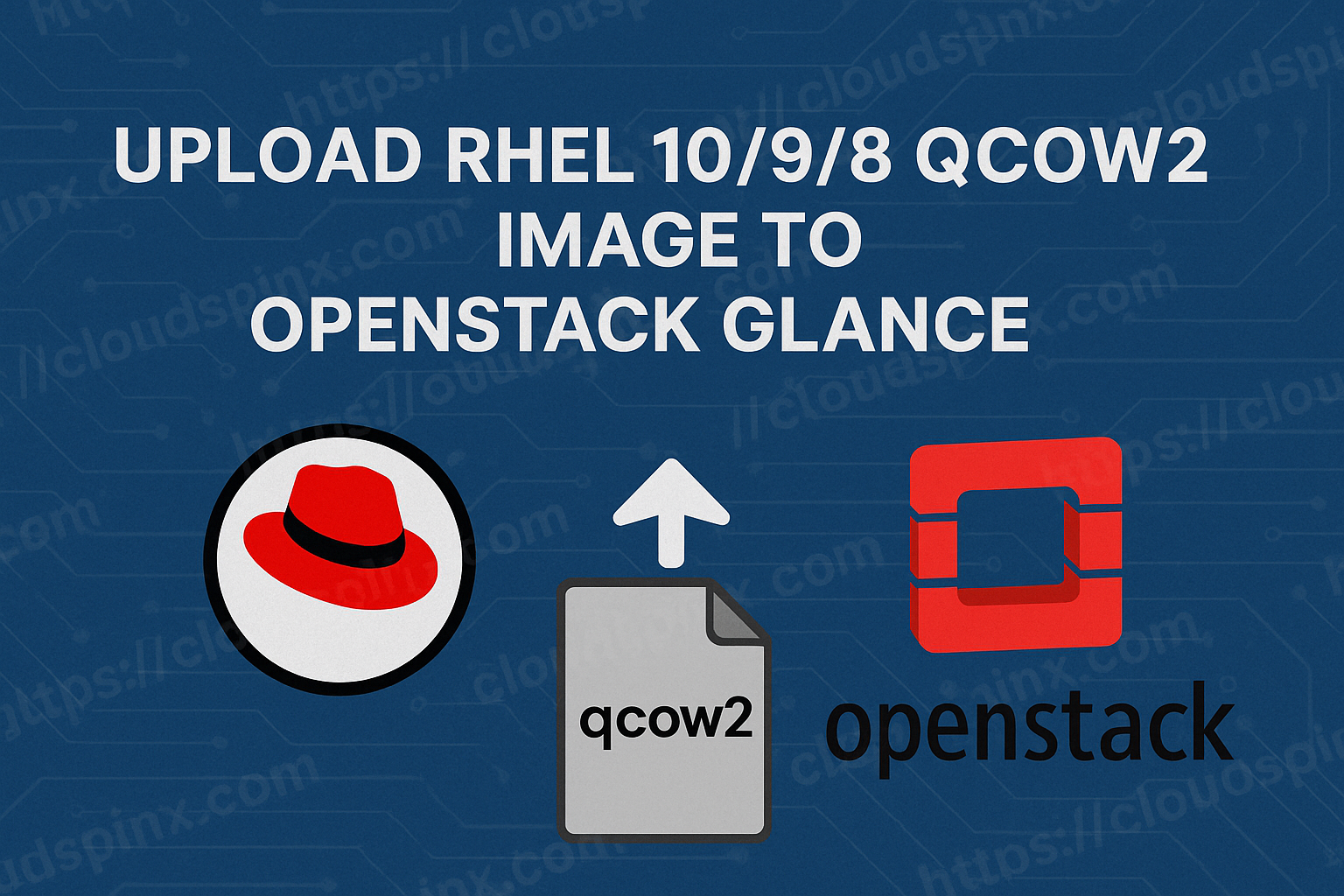Jenkins is a free to use and open source automation server written in Java. It is created to enable developers around the world to reliably build, test, and deploy their software of any kind. Jenkins is designed to be modular and you can easily extend its functionality by developing your own Jenkins plugins.
This guide will cover all the steps required to install and run Jenkins Server on Amazon Linux 2 and secure it with Let’s Encrypt SSL certificate. By the end of this article you should have a working Jenkins server and ready to automate all sorts of tasks related to building, testing, and delivering or deploying software.
As there are many ways of installing Jenkins, mainly native system packages, Docker, or running is a standalone on any machine with a Java Runtime Environment (JRE) installed. We will be focusing on the package installation method as it is the easiest and most convenient method.
These are the minimum hardware requirements for installing Jenkins on Amazon Linux 2 server.
- 256 MB of RAM, 1 GB+ recommended
- 1 CPU core at minimum
- 1 GB of drive space (although 10 GB is a recommended minimum if running Jenkins as a Docker container)
Step 1: Update Amazon Linux 2 server
Start an SSH session to your Amazon Linux 2 server.
$ ssh [email protected]
Warning: Permanently added '192.168.1.184' (ECDSA) to the list of known hosts.
Enter passphrase for key '/Users/cloudspinx/.ssh/id_rsa':
__| __|_ )
_| ( / Amazon Linux 2
___|\___|___|
https://aws.amazon.com/amazon-linux-2/
10 package(s) needed for security, out of 24 available
Run "sudo yum update" to apply all updates.
[cloudspinx@AmazonLinux ~]$Let’s make sure our Amazon Linux 2 server is up-to-date.
sudo yum -y updatePerform a system reboot after the upgrade is done.
sudo systemctl rebootStep 2: Install Java on Amazon Linux 2
Jenkins main requirement is Java runtime environment. Java packages are available to Amazon Linux through correto. We will install OpenJDK 17 in the server.
sudo yum install java-17-amazon-correttoHit the y key in your keyboard when asked before installation commences.
...
Transaction Summary
==================================================================================================================================================================
Install 1 Package (+31 Dependent packages)
Total download size: 46 M
Installed size: 183 M
Is this ok [y/d/N]: yConfirm installation by checking the Java version.
$ java --version
openjdk 17.0.13 2024-10-15 LTS
OpenJDK Runtime Environment Corretto-17.0.13.11.1 (build 17.0.13+11-LTS)
OpenJDK 64-Bit Server VM Corretto-17.0.13.11.1 (build 17.0.13+11-LTS, mixed mode, sharing)Step 3: Add Jenkins repository
I had stated earlier that we’ll use the package installation method. In this method a package repository is required which can be added by running the following command in the terminal.
sudo tee /etc/yum.repos.d/jenkins.repo<<EOF
[jenkins]
name=Jenkins
baseurl=http://pkg.jenkins.io/redhat
gpgcheck=0
EOFImport GPG repository key.
sudo rpm --import https://jenkins-ci.org/redhat/jenkins-ci.org.keyUpdate the list of repositories to confirm it is working.
$ sudo yum repolist
Loaded plugins: langpacks, priorities, update-motd
jenkins | 2.9 kB 00:00:00
jenkins/primary_db | 222 kB 00:00:03
repo id repo name status
amzn2-core/2/x86_64 Amazon Linux 2 core repository 36,826
amzn2extra-docker/2/x86_64 Amazon Extras repo for docker 137
amzn2extra-java-openjdk11/2/x86_64 Amazon Extras repo for java-openjdk11 314
jenkins Jenkins 815
repolist: 38,092Step 4: Install Jenkins Server on Amazon Linux 2
The final step is the actual installation of Jenkins Server in Amazon Linux 2 system.
sudo yum install -y jenkinsAccept to start the installation of Jenkins on Amazon Linux 2 server.
Loaded plugins: langpacks, priorities, update-motd
Resolving Dependencies
--> Running transaction check
---> Package jenkins.noarch 0:2.495-1.1 will be installed
--> Finished Dependency Resolution
Dependencies Resolved
=====================================================================================================================================================
Package Arch Version Repository Size
=====================================================================================================================================================
Installing:
jenkins noarch 2.495-1.1 jenkins 90 M
Transaction Summary
=====================================================================================================================================================
Install 1 Package
Total download size: 90 M
Installed size: 90 M
Downloading packages:
jenkins-2.495-1.1.noarch.rpm | 90 MB 00:00:15
Running transaction check
Running transaction test
Transaction test succeeded
Running transaction
Installing : jenkins-2.495-1.1.noarch 1/1
Verifying : jenkins-2.495-1.1.noarch 1/1
Installed:
jenkins.noarch 0:2.495-1.1
Complete!Start and enable the jenkins service to start at the OS boot.
sudo systemctl start jenkins
sudo systemctl enable jenkinsConfirm the service is running and set to autostart.
$ systemctl status jenkins
● jenkins.service - Jenkins Continuous Integration Server
Loaded: loaded (/usr/lib/systemd/system/jenkins.service; enabled; vendor preset: disabled)
Active: active (running) since Mon 2025-02-03 17:33:45 UTC; 38s ago
Main PID: 12798 (java)
CGroup: /system.slice/jenkins.service
└─12798 /usr/bin/java -Djava.awt.headless=true -jar /usr/share/java/jenkins.war --webroot=%C/jenkins/war --httpPort=8080
Feb 03 17:33:38 amazonlinux.cloudspinx.com jenkins[12798]: *************************************************************
Feb 03 17:33:38 amazonlinux.cloudspinx.com jenkins[12798]: *************************************************************
Feb 03 17:33:38 amazonlinux.cloudspinx.com jenkins[12798]: *************************************************************
Feb 03 17:33:45 amazonlinux.cloudspinx.com jenkins[12798]: 2025-02-03 17:33:45.766+0000 [id=33] INFO jenkins.InitReactorRunner...zation
Feb 03 17:33:45 amazonlinux.cloudspinx.com jenkins[12798]: 2025-02-03 17:33:45.786+0000 [id=23] INFO hudson.lifecycle.Lifecycl...unning
Feb 03 17:33:45 amazonlinux.cloudspinx.com systemd[1]: Started Jenkins Continuous Integration Server.
$ systemctl is-enabled jenkins
enabledThe Jenkins service will bind to port 8080 by default.
$ sudo ss -tunelp | grep 8080
tcp LISTEN 0 50 *:8080 *:* users:(("java",pid=12798,fd=8)) uid:996 ino:35960 sk:d v6only:0 <->Step 5: Access Jenkins Server on Amazon Linux 2
If the service was started successfully the Web console can be accessed on:
http://[serverip_ip_or_hostname]:8080The default login password is store in this file:
$ sudo cat /var/lib/jenkins/secrets/initialAdminPassword
7c893b9829dd4ba08244ad77fae9fe4fCopy the password from the said location and paste it in the box:
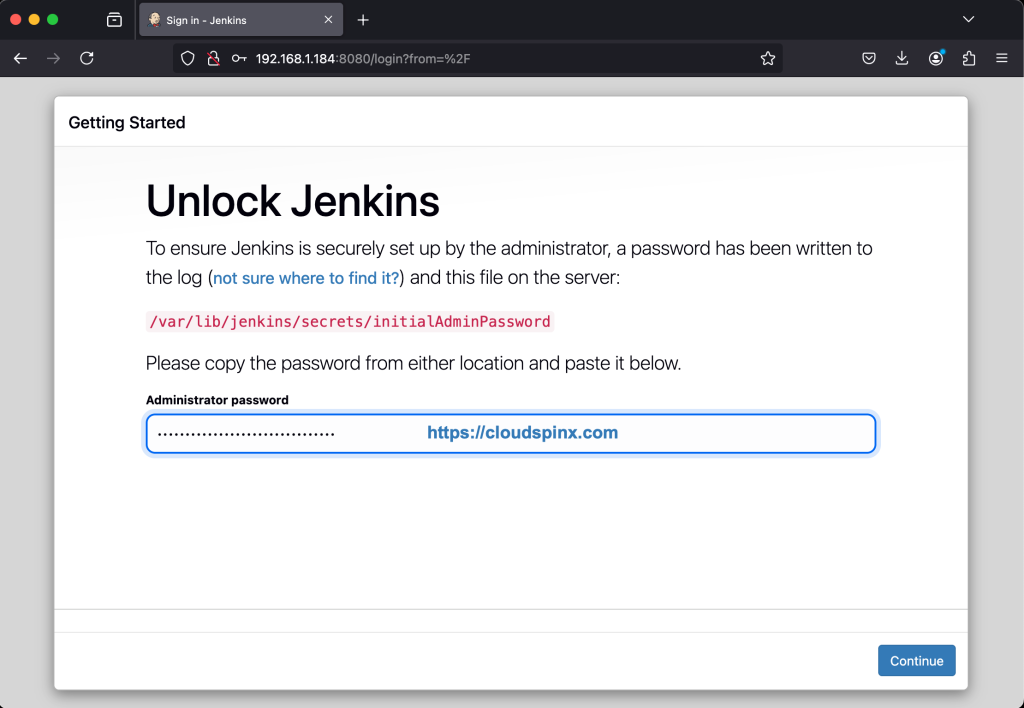
Agree to install suggested Plugins which extends Jenkins with additional features to support many different needs:
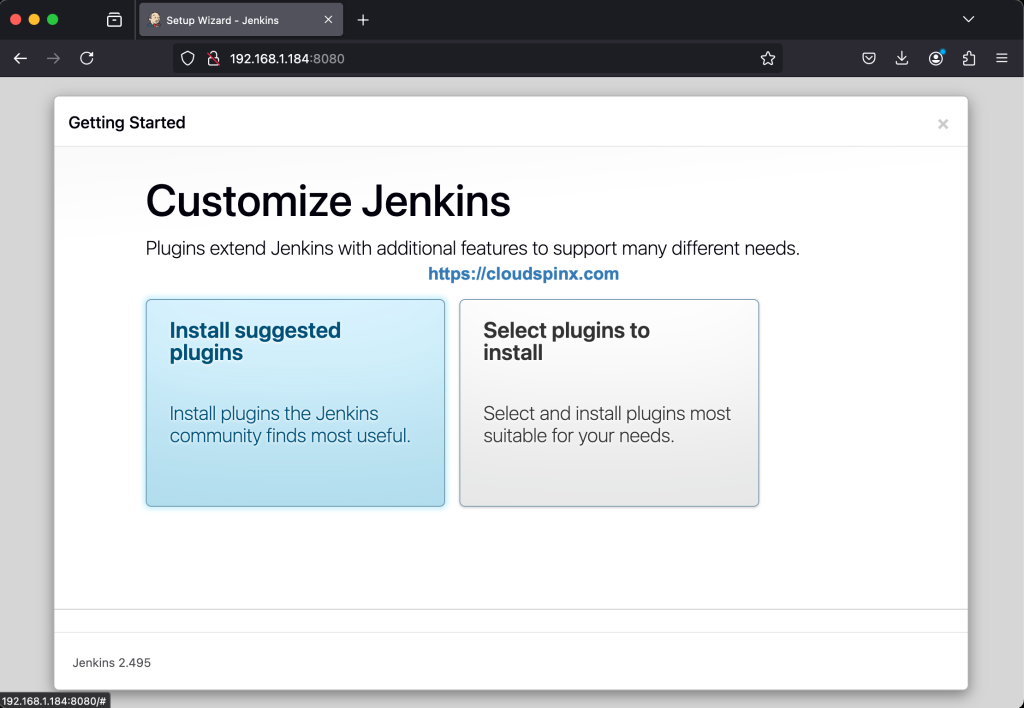
Wait for the plugins to be installed:
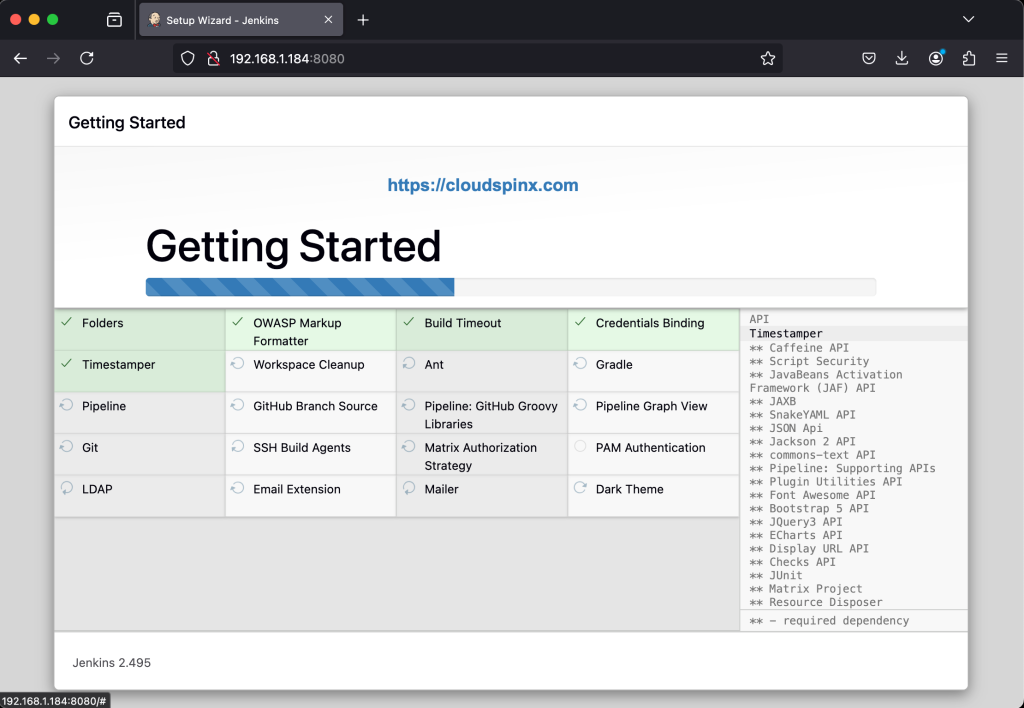
Once the plugins are installed create first admin user.
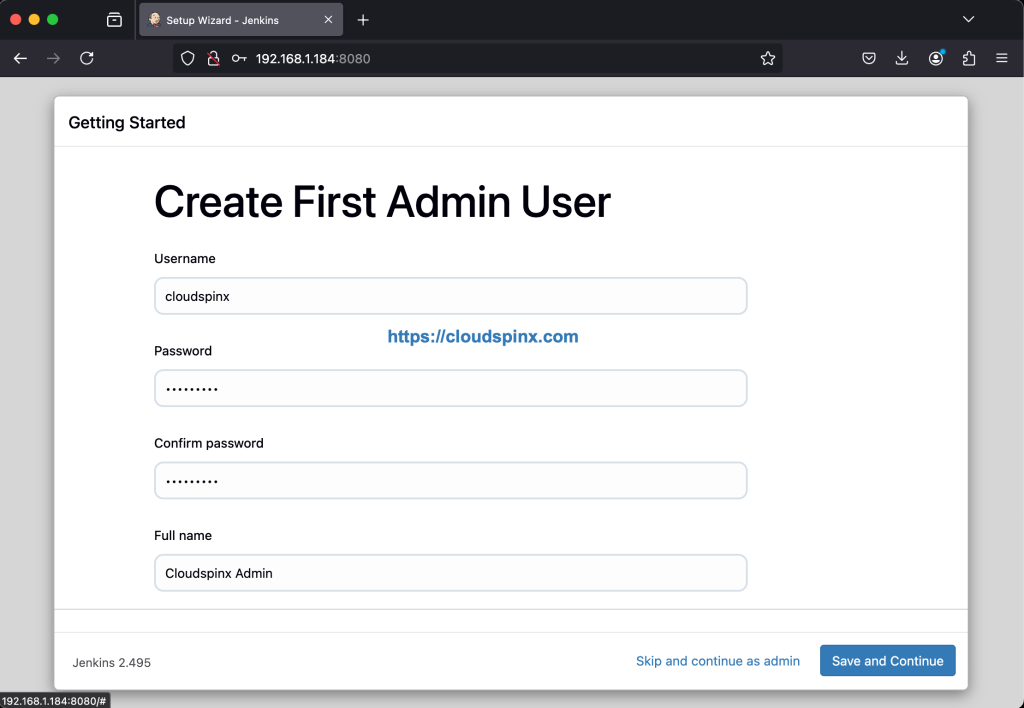
Jenkins Instance access URL will be printed in the screen that follows. This can be changed with a valid DNS name.
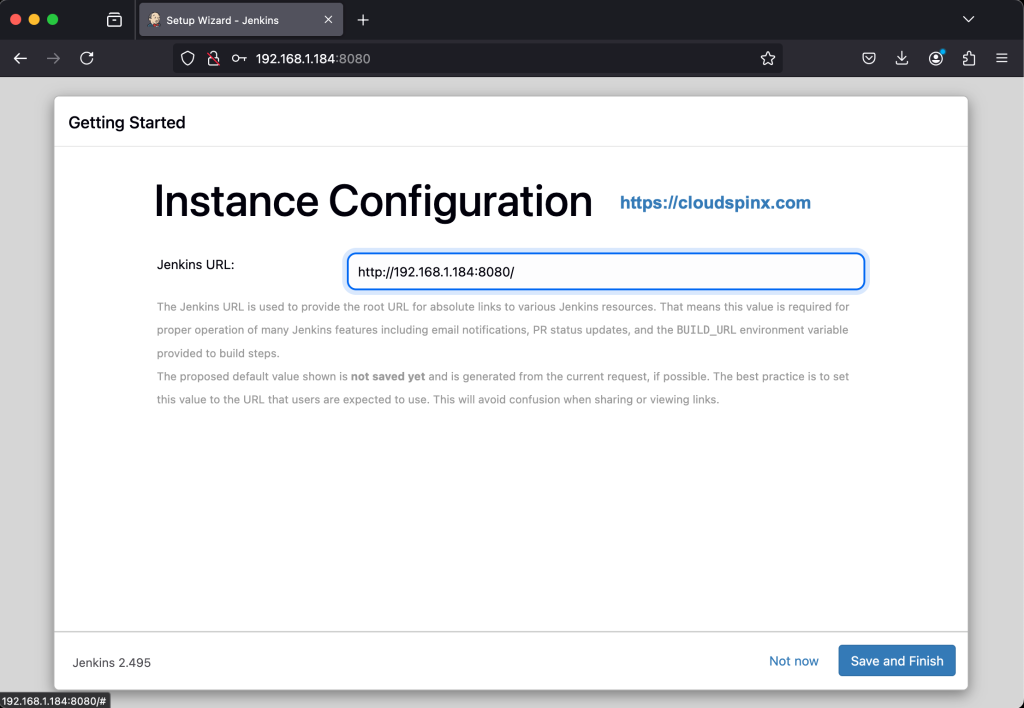
Finish the setup to start using Jenkins. For more reading on configurations refer to official Jenkins Documentation.
Learn more about how we can support your journey with CloudSpinx.
More articles on Amazon Linux 2.

